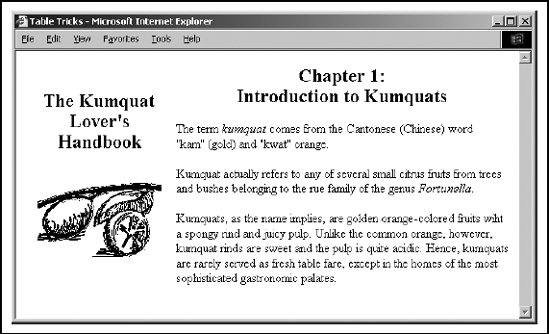Section 2.10. Tables
2.10. TablesFor a language that emerged from academiaa world steeped in datait's not surprising to find that HTML (and now its progeny, XHTML) supports a set of tags for data tables that not only align your numbers , but can specially format your text, too. Eight tags enable tables; including the <table> tag itself and a <caption> tag for including a description of the table. Special tag attributes let you change the look and dimensions of the table. You create a table row by row, putting between the table row ( <tr> ) tag and its end tag ( </tr> ) either table header ( <th> ) or table data ( <td> ) tags and their respective contents for each cell in the table (end tags, too, with XHTML). Headers and data may contain nearly any regular content, including text, images, forms, and even another table. As a result, you can also use tables for advanced text formatting, such as for multicolumn text and sidebar headers (see Figure 2-5). For more information, see Chapter 10. Figure 2-5. Tables let you perform page layout tricks, too |
EAN: 2147483647
Pages: 189
- Chapter II Information Search on the Internet: A Causal Model
- Chapter VIII Personalization Systems and Their Deployment as Web Site Interface Design Decisions
- Chapter X Converting Browsers to Buyers: Key Considerations in Designing Business-to-Consumer Web Sites
- Chapter XIV Product Catalog and Shopping Cart Effective Design
- Chapter XVII Internet Markets and E-Loyalty